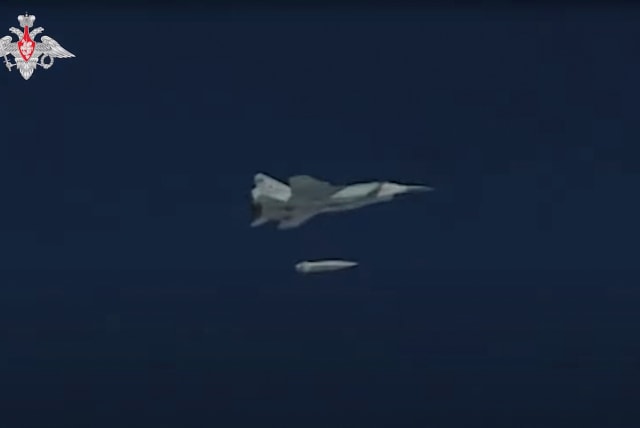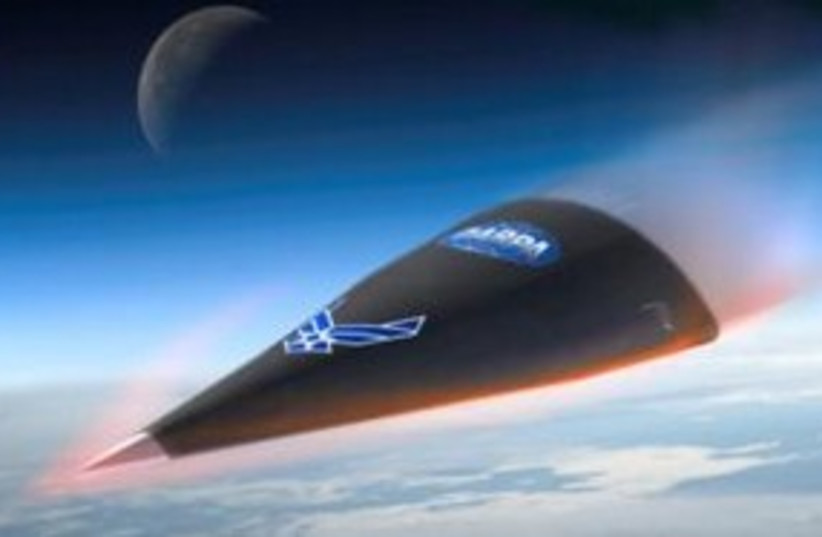What does hypersonic missile arms race mean for Israeli security? - analysis

A hypersonic missile is much harder to shoot down. For this reason, Israel has been increasingly worried in recent years about Iran obtaining this weapon.
With the US military announcing the deployment of its first long-range hypersonic weapon, it is on its way to either catching up to or narrowing the gap with China and Russia in this arena.
Hypersonic missiles are much faster and take a different flightpath than a regular ballistic missile, flying part of their journeys lower to the ground where they are harder to detect by radar. They are also considered more maneuverable than ballistic missiles.
Put simply, a hypersonic missile is much harder to shoot down.
For this reason, Israel has been increasingly worried in recent years about Iran obtaining this weapon.
Who has hypersonic missiles and why should Israel be worried?
Russia has been bragging since 2019 that its hypersonic missiles give it an unstoppable method for potentially hitting the US.
Although the US is more advanced than Russia in many other areas, in this arena it has been behind both Russia and China.
In fact, in early 2022, even North Korea claimed it had fired a hypersonic missile, though experts were skeptical that whatever it was referring to as “hypersonic” had the same capabilities as the weapons developed by Russia and China.
The US version sounds like the real deal, with the American military sharing far more details than others have, including that it was launched during a Thunderbolt Strike exercise and that it was deployed 3,100 miles from the Joint Base Lewis-McChord to Cape Canaveral in Florida.
“Our soldiers processed real missions, with real data, in real-time, to produce real effects to learn lessons and generate readiness. We’re training the way we will fight, and our Soldiers are ready to deploy and employ this critical capability forward,” said Brig.-Gen. Bernard Harrington, the first multi-domain task-force commander.
Not that the US missile is actually operational like Russia’s, which has been used in Ukraine.
Harrington added, “The second half of the army’s year of long-range precision fires will continue to represent groundbreaking strides toward integrated deterrence in the Pacific” – another way of saying that what was announced was one of multiple planned tests.
It seems that the timing of the US announcement could be tied to Russia’s threat last week to fire a hypersonic missile at the International Criminal Court as payback for the criminal probe against Russian President Vladimir Putin.
To the extent Israel is worried about the Islamic Republic getting this weapon, traditionally its concerns revolved around North Korea mastering the issue and transferring the technology, as it has done in some areas related to nuclear weapons.
Then again, as long as Pyongyang had not clearly mastered the technology, Jerusalem was less concerned.
The newest concern these days is that Moscow may transfer the technology to Iran.
Tehran recently announced that Putin signed a deal to sell to it much more advanced aircraft – something Russia would never have done before its fallout with the West as part of the Ukraine war.
There have also been hints that Putin might sell Iran the S-400 anti-aircraft missile-defense system, having sold it the S-300 system some years ago.
This could greatly complicate Israel’s capability to preemptively strike any Iranian moves toward a nuclear weapon.
If Moscow is willing to play with that amount of fire with Iran, after the ayatollahs provided Putin with drones to fight Ukraine, maybe it would be even willing to pass on hypersonic missile technology?
This is why the latest development with the US is important.
Like the US, the Jewish state has not been working as much in this arena.
Uzi Rubin, one of the key fathers of Israel’s missile-defense program has said that Jerusalem’s missile defense technologies could likely be modified to intercept even a hypersonic missile.
But that is a big maybe and could take years to develop from, if and whenever someone decides to invest big money into the modifications.
In the meantime, Israel could be left without a direct answer to a potential Iranian hypersonic missile threat.
Yet, if the US has such a full-scale capability in the near future, it could transfer the capabilities to Israel as a parallel move to Russia transferring the technology to Iran – providing an answer.
Given that Israel is much closer to Moscow than Tehran is to the US, even the possibility of such a scenario might also discourage Putin from making such a risky move.
Jerusalem Post Staff contributed to this report.
Jerusalem Post Store
`; document.getElementById("linkPremium").innerHTML = cont; var divWithLink = document.getElementById("premium-link"); if (divWithLink !== null && divWithLink !== 'undefined') { divWithLink.style.border = "solid 1px #cb0f3e"; divWithLink.style.textAlign = "center"; divWithLink.style.marginBottom = "15px"; divWithLink.style.marginTop = "15px"; divWithLink.style.width = "100%"; divWithLink.style.backgroundColor = "#122952"; divWithLink.style.color = "#ffffff"; divWithLink.style.lineHeight = "1.5"; } } (function (v, i) { });

